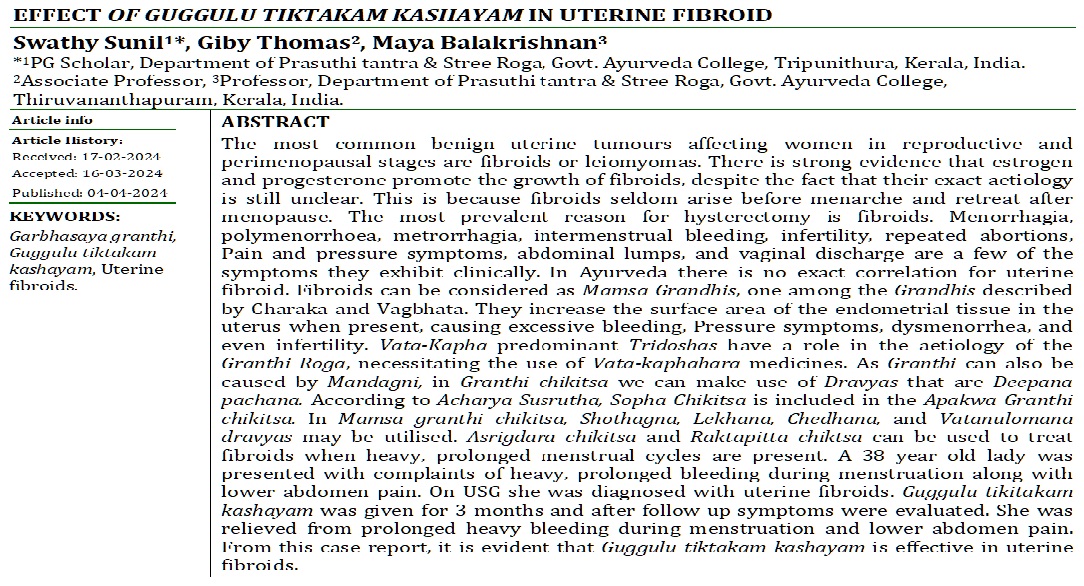Effect of Guggulu Tiktakam Kashayam in Uterine Fibroid
Abstract
The most common benign uterine tumours affecting women in reproductive and perimenopausal stages are fibroids or leiomyomas. There is strong evidence that estrogen and progesterone promote the growth of fibroids, despite the fact that their exact aetiology is still unclear. This is because fibroids seldom arise before menarche and retreat after menopause. The most prevalent reason for hysterectomy is fibroids. Menorrhagia, polymenorrhoea, metrorrhagia, intermenstrual bleeding, infertility, repeated abortions, pain and pressure feelings, abdominal lumps, and vaginal discharge are a few of the symptoms they exhibit clinically. In Ayurveda there is no exact correlation for uterine fibroid. Fibroids can be considered as Mamsa Grandhis, one among the Grandhis described by Charaka and Vagbhata. They increase the surface area of the endometrial tissue in the uterus when present, causing excessive bleeding, pressure feelings, dysmenorrhea, and even infertility. Vata-Kapha predominant Tridoshas have a role in the aetiology of the Granthi Roga, necessitating the use of Vata-kaphahara medicines. As Granthi can also be caused by Mandagni, in Granthi chikitsa we can make use of Dravyas that are Deepana pachana. According to Acharya Susrutha, Sopha Chikitsa is included in the Apakwa Granthi chikitsa. In Mamsa granthi chikitsa, Shothagna, Lekhana, Chedhana, and Vatanulomana dravyas may be utilised. Asrigdara chikitsa and Raktapitta chiktsa can be used to treat fibroids when heavy, prolonged menstrual cycles are present. A 38 year old lady was presented with complaints of heavy, prolonged bleeding during menstruation along with lower abdomen pain. On USG she was diagnosed with uterine fibroids. Guggulu tikitakam kashayam was given for 3 months and after follow up symptoms were evaluated. She was relieved from prolonged heavy bleeding during menstruation and lower abdomen pain. From this case report, it is evident that Guggulu tiktakam kashayam is effective in uterine fibroids
Downloads

Copyright (c) 2024 International Journal of Ayurveda and Pharma Research

This work is licensed under a Creative Commons Attribution-NonCommercial-ShareAlike 4.0 International License.






